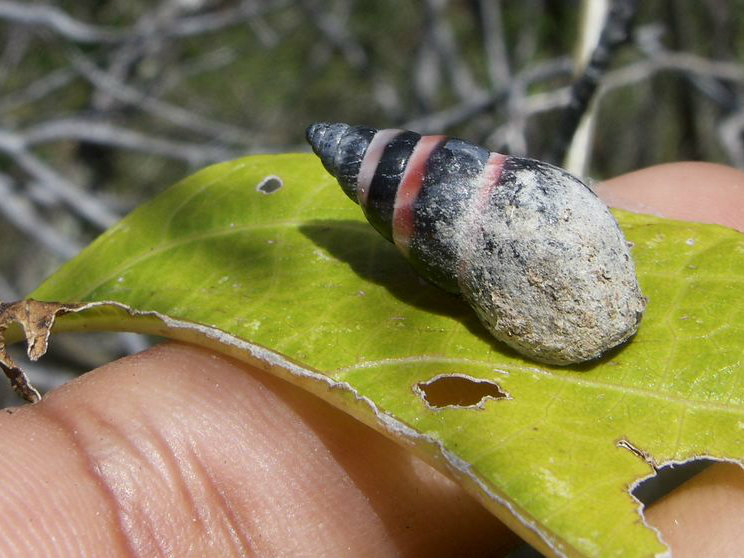
The world’s first and only species to go “extinct” because of climate change has been found alive and well – and living where it always has for the past 80,000 or so years – on the Indian Ocean atoll of Aldabra.
Since 2007, the Aldabra Banded Snail (Rhachistia aldabrae) has been the chief poster mollusc of climate alarmists across the globe. That’s because – according to a peer-reviewed paper published by an “expert” in the field Justin Gerlach – it was the first extinction directly attributable to climate change.
In his paper, published in the Royal Society journal Biology Letters, Gerlach claimed:
The only known population of the Aldabra banded snail Rhachistia aldabraedeclined through the late twentieth century, leading to its extinctionin the late 1990s. This occurred within a stable habitat and itsextinction is attributable to decreasing rainfall on Aldabra atoll,associated with regional changes in rainfall patterns in the latetwentieth and early twenty-first century. It is proposed that theextinction of this species is a direct result of decreasing rainfallleading to increased mortality of juvenile snails.
Gerlach also ventured to suggest that his conclusion was the result of “exhaustive surveys” and “extensive surveys.”
But not that exhaustive or extensive, clearly.
The snail – quite handsome by molluscular standards, with a conical shell and a natty, black and reddish-pink go-faster stripe pattern – was recently rediscovered in “dense mixed scrub forest on the coastal fringe of Malabar island, Aldabra Atoll, Seychelles”.
This reduces to a grand total of zero the number of species extinctions around the world due to “climate change” – something which will no doubt prove gravely disappointing to global warming alarmists everywhere.
For years, at every opportunity, they have being doing their damnedest to find some species – any species – which they can record as having been wiped out by climate change.
Their other prime contender was the Costa Rican golden toad. But this, it subsequently emerged, was the victim of a chytrid fungus – not, as various ecologists had desperately posited, reduced rainfall due to climate change.
Such is the reluctance of the climate alarmists to admit defeat, however, that they are refusing to update their records accordingly.
One reputable ecologist disturbed by this unscientific behaviour is Oxford University’s Clive Hambler, lecturer in Biological and Human Sciences at Hertford College.
He has written to Biology Letters demanding that it retract the misleading J Gerlach et al paper which, he notes, has subsequently been quoted in at least one other peer-reviewed paper, and which has even been incorporated into the latest IPCC climate impacts assessment.
So far, however, Biology Letters has refused to retract the paper – despite the fact that doubts were raised about its credibility almost immediately after its publication in 2007.
Hambler, who has spent nine months doing field work on Aldabra, joined with three fellow experts in submitting a rebuttal to Biology Letters in late 2007. They questioned whether Gerlach, who had spent only a few days on Aldabra, could genuinely describe his survey as either “exhaustive” or “extensive.” Furthermore, his accounts of the rainfall record on Aldabra appeared to be a “complete mess.”
However, Biology Letters – an imprint of the fervently warmist Royal Society – rejected the paper, claiming it had failed “peer-review.”
Hambler said his decision to speak out on this issue was taken with some reluctance because it could be professionally damaging. He was doing so, he told Breitbart London, because of the damage misleading studies like this were doing to the cause of environmentalism.
“It’s very important not to cry wolf about species extinction. And it’s very important not to cry wolf about climate change. It’s even more important not to cry wolf when these two important issues are combined. Not only does it damage the credibility of environmental science but it wastes money. There has even been talk of a captive breeding programme for these snails. But what is the point of doing that when there are other species out there in much greater danger?”

COMMENTS
Please let us know if you're having issues with commenting.